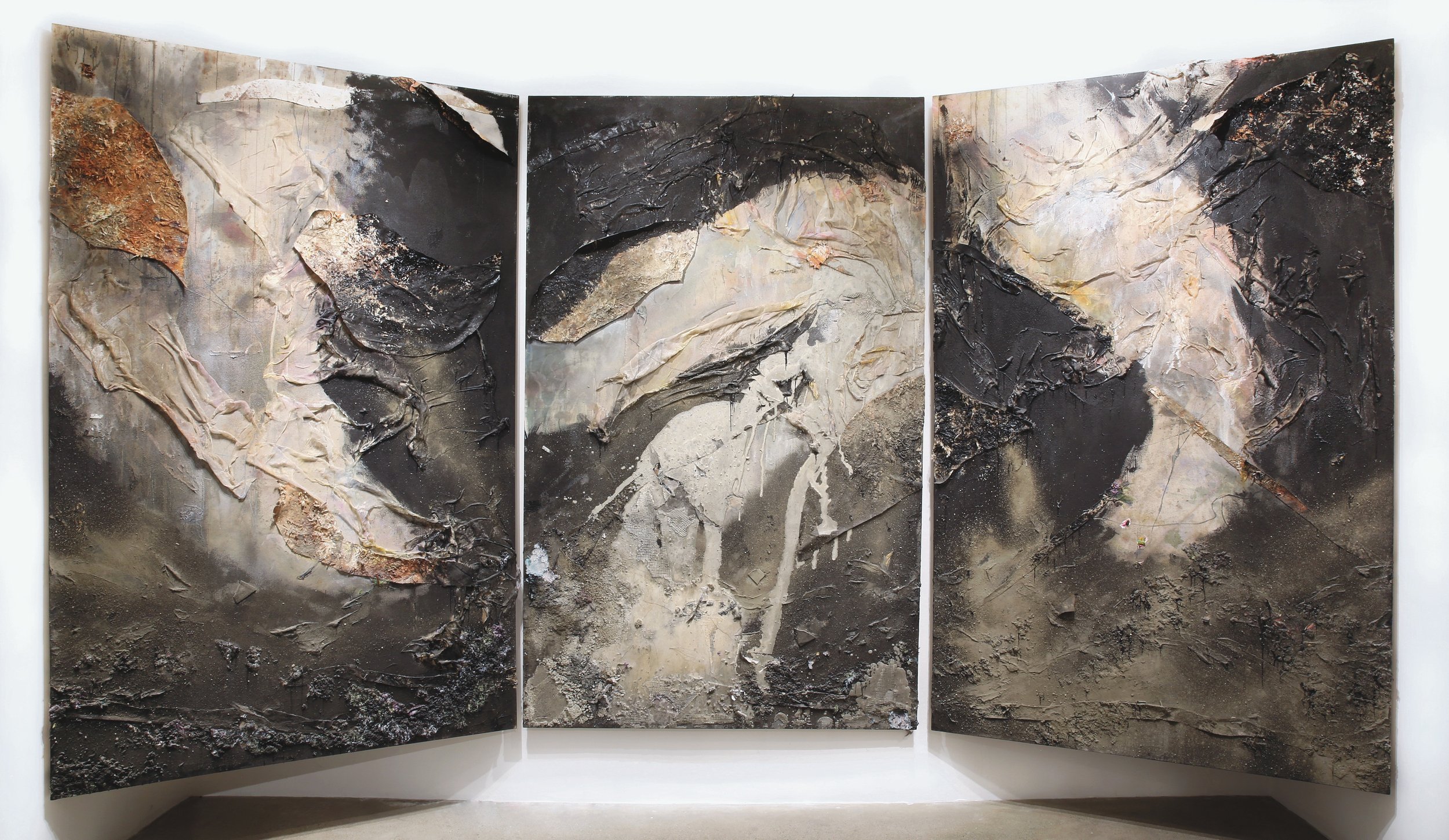

THREE ELEGIES (Triptych)
2023
96” x 60” each
Oil, acrylic, watercolor, charcoal, ash, cement, cheesecloth, drop cloth, shredded paper on canvas
“Gazing toward the largest work presented in the exhibition, a triptych titled ‘Three Elegies’, the archeological layers of witnessing, uncovering, and interpreting catastrophe peel-off the work’s igneous surface. The weaving of material and memory enacts a quest for meaning between the limits of personal experience and the histories of others—and the borders of other places. This quest often occurs through fragmented conversations with modern philosophical, theoretical, musical, and literary works and figures looming on high in the Western canon. However, he approaches the mythological status of such texts/authors with a raw intimacy he finds with the suffering of these icons as lived individuals who exist at the margins despite their eventual epistemic or cultural centrality. Describing this aspect of his process with regard to ‘Three Elegies’, Santipreecha writes “‘Three Elegies’ is a tangential reference to the works of one of my favorite poets, Edith Sitwell and her ‘Three Rustic Elegies’. I’ve been struck for a long time by those poems and had always wanted to engage in a kind of dialogue with them but always felt unable to directly. This triptych began as a contemplation on some similar themes as the poems as well as the stoicism many women including my mother maintain through harsh and abusive situations. It began too as a way of contemplating the war in Ukraine and the questioning of borders, hence the use of fragmented drop cloth worked over with various inks and dyes, gessos and shellac with shredded paper and being walked over for days.”
This framing of universal events—or events occurring elsewhere but nonetheless shared as a public spectacle—through personal and domestic experience is a constant mode of contextualization and communication across all of the works. But the singularities and specific dialogues between materials and concepts are always unique to each work. With ‘Three Elegies’, the juxtaposition of different textures and the terrestrial grounding of cement against the ethereality of the other materials used (shellac, paint, paper, ash…) compose a somber and nearly monumental sense of reflective time. Though, despite the large scale of the works, a viewer arrives at these surfaces as worn tomes demanding to be read in private. Publicly visible, marked, and shared—but personally and privately framed, communicated, and transformed.”
-Text by curators Objet A.D.
“Three Elegies began as a contemplation on the war in Ukraine and the questioning of the arbitrariness of borders as well as the stoicism many women, including my mother, maintain through harsh and abusive situations. These were explored through a dialogue between two poetic works which are very close to my heart, Anna Akhmatova’s Requiem and Edith Sitwell’s Three Rustic Elegies, from which the triptych’s title takes its reference. As such the works contain many layers of watercolor, acrylic, oil, ash, cheesecloth and cement, each veiled (and framed) by an/other layer, framed further by pieces of fragmented dropcloth worked over with various inks, dyes, gessos and shredded paper and being walked over for days before being arbitrarily segmented; finally framed by the three panels which make up the work.”
